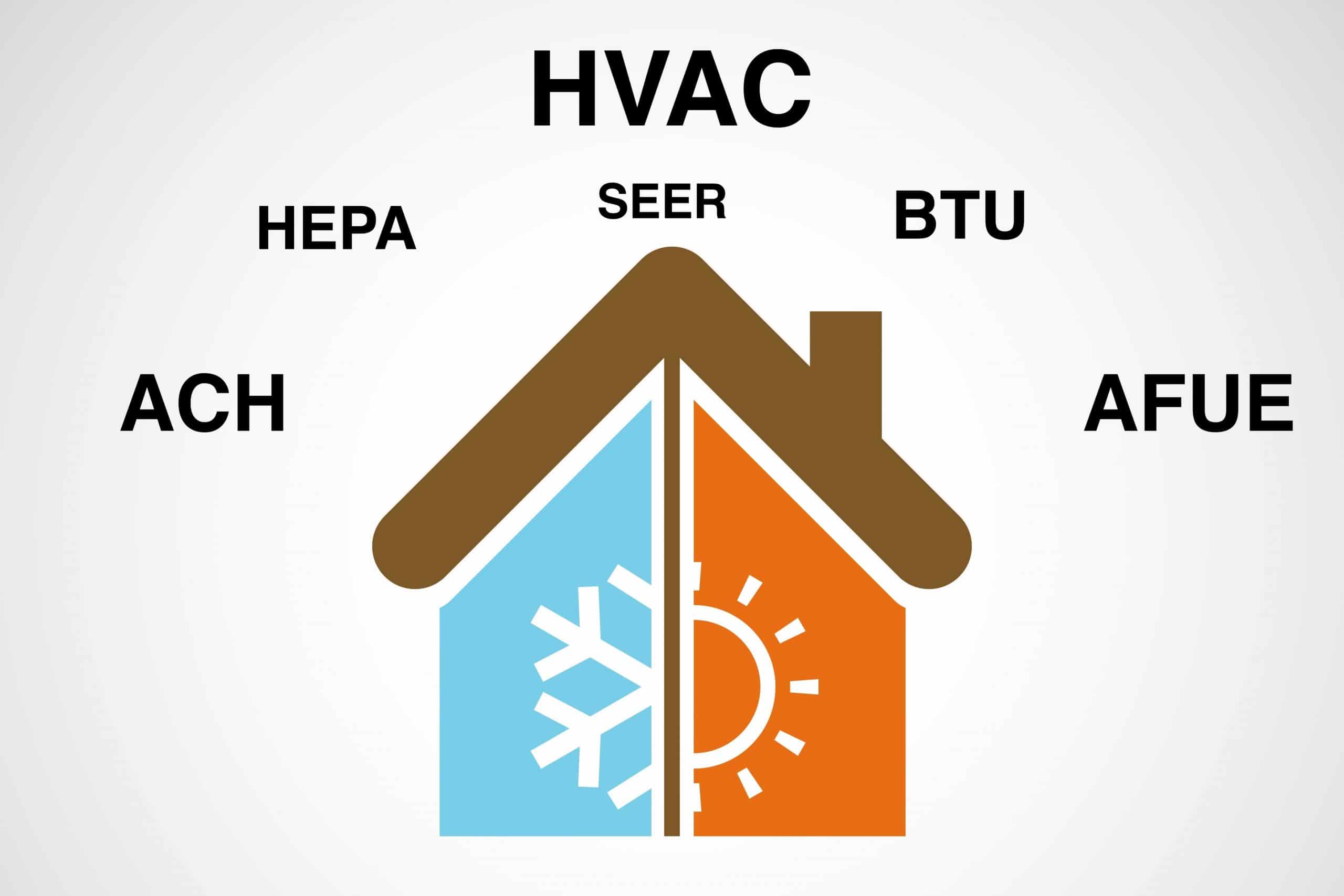
To an average homeowner shopping for an air conditioner or furnace or having their existing unit serviced, HVAC acronyms can sometimes sound like a secret code. They are actually simple inside, industry shorthand — abbreviations to convey technical details quickly and accurately. It's helpful for you, the consumer, to know what they mean when you’re having cooling/heating work done or considering purchasing a new system.
Here are five common HVAC (Heating, Ventilation and Air Conditioning) acronyms you may encounter:
ACH: Air Changes per Hour. If you’re concerned about adequate ventilation, it’s helpful to know the ACH for your home. This figure represents the number of times per hour that the entire air volume inside the house is removed and replaced by fresh air.
AFUE: Annual Fuel Utilization Efficiency. This figure represents the amount of fuel consumption that actually produces heat versus the amount lost during the process. A higher AFUE percentage means a more energy-efficient furnace. Standard efficiency furnaces have an AFUE rating of 80%. Units with AFUE ratings of 90% or above are considered high-efficiency models and typically provide superior heating performance and result in lower operating costs.
BTU: British Thermal Units. The traditional measure representing units of heat. BTUs in air conditioner specifications indicate the amount of heat removed from a house per hour. Furnace BTU ratings, conversely, refer to heat added to the house. BTU specs are utilized in load calculations to accurately “size” an AC or furnace to match the square footage and thermal characteristics of a specific house.
HEPA: High-Efficiency Particulate Air. This refers to very efficient HVAC air filters. HEPA filters capture 99% of particles, from common dust down to invisible contaminants like mold spores and viruses.
SEER: Seasonal Energy Efficiency Ratio. SEER expresses central AC energy efficiency. The higher the SEER rating, the more efficiently the AC operates and the lower monthly operating costs will usually be. Federal regulations require a minimum SEER of 13. However, high-efficiency central ACs are now available with a SEER rating as high as 26.
Need help deciphering HVAC acronyms? The professionals at Jackson & Sons are more than happy to explain it in terms we can call understand.

